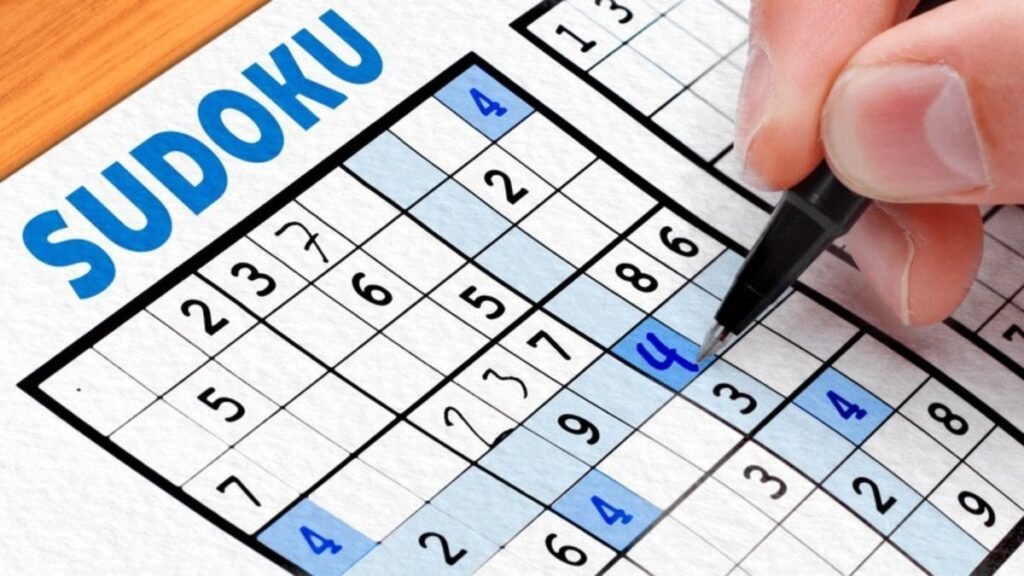Sudoku, a game that brings numbers, patterns, and logic together, is enjoyed by millions around the world. While it may appear daunting at first, Sudoku puzzles are easy to learn and offer a wide range of difficulty levels, making them accessible for beginners and experienced players alike. This article covers the origins, rules, benefits, and strategies of Sudoku, alongside some frequently asked questions to guide both novices and seasoned puzzlers
What is Sudoku?
Sudoku is a logic-based, combinatorial puzzle. A typical Sudoku puzzle consists of a 9×9 grid, divided into nine 3×3 subgrids, each called a “box” or “region.” The objective is to fill the grid with numbers from 1 to 9, following specific rules to ensure that each row, column, and box contains every number from 1 to 9 without any repetition.
Origins of Sudoku
The concept of Sudoku has a rich history rooted in mathematical puzzles. While Sudoku as we know it today was popularized in Japan in the 1980s, its origins date back to the 18th century when Swiss mathematician Leonhard Euler devised “Latin Squares.” These were mathematical grids that shared some structural principles with Sudoku, though they were purely mathematical and lacked the logical elements that make Sudoku unique.
Modern Sudoku was first published in the U.S. in 1979 by Dell Magazines under the name “Number Place.” It was introduced to Japan in 1984, where it gained its current name, which translates roughly to “number single” or “single number.” Japanese publisher Nikoli refined the puzzle, adding stricter rules, and from there, Sudoku’s popularity exploded, eventually spreading worldwide in the 2000s.
Sudoku Rules
To solve a Sudoku puzzle, players must adhere to a few basic rules:
- Each row must contain the numbers 1 to 9, without repetition.
- Each column must also contain the numbers 1 to 9, without repetition.
- Each 3×3 box within the 9×9 grid must include the numbers 1 to 9, with no duplicates.
These simple rules create a complex web of logical possibilities, making every puzzle a unique challenge.
Types of Sudoku Puzzles
While the classic 9×9 grid is the most popular format, Sudoku puzzles come in various types and sizes, adding extra layers of difficulty and variety for enthusiasts:
- Mini Sudoku – Typically a 4×4 or 6×6 grid with fewer numbers, ideal for beginners or younger players.
- Jigsaw Sudoku – Rather than the standard 3×3 boxes, Jigsaw Sudoku has irregularly shaped regions that must also contain numbers 1 to 9.
- Samurai Sudoku – A larger puzzle consisting of multiple overlapping 9×9 grids, usually five grids that intersect in the middle.
- Diagonal Sudoku (or “Sudoku X”) – In addition to the traditional rules, the numbers 1 to 9 must also appear once in each main diagonal.
- Hyper Sudoku – Features additional regions or shaded boxes within the grid that also must contain numbers 1 to 9.
The Benefits of Playing Sudoku
Sudoku puzzles offer more than just entertainment. They stimulate the brain, offering a variety of cognitive and psychological benefits.
- Enhanced Problem-Solving Skills: Solving Sudoku requires logical thinking and strategic planning, which improves problem-solving skills.
- Increased Focus and Concentration: Sudoku demands sustained attention, which can strengthen focus and help players develop longer concentration spans.
- Memory Improvement: Remembering numbers, patterns, and strategies enhances short-term memory.
- Stress Relief: Engaging in Sudoku helps some people find a state of “flow,” which can be calming and act as a stress reliever.
- Boost in Logical and Critical Thinking: The step-by-step process of analyzing and solving the puzzle hones logical reasoning skills.
Strategies for Solving Sudoku Puzzles
Solving Sudoku puzzles requires patience, observation, and logical deduction. Here are some popular strategies that can help players improve their chances of success:
1. Start with the Basics
- Look for rows, columns, or boxes that are nearly complete. Identifying missing numbers in these areas can give you a head start.
2. Use the Process of Elimination
- Identify which numbers can and cannot be in certain spaces by scanning rows, columns, and boxes.
3. The Cross-Hatching Technique
- Scan rows and columns within each box to see where a particular number must go. This technique is particularly effective for filling in easy or moderate puzzles.
4. Pencil in Possible Numbers
- For more challenging puzzles, write small numbers in each cell to keep track of possible solutions. This helps visualize potential moves and eliminate options logically.
5. Avoid Guessing
- In Sudoku, guessing often leads to errors that can derail the solution. Stick to logical deductions rather than assumptions for a more reliable approach.
6. Look for Hidden and Naked Pairs
- Hidden pairs occur when only two numbers could go in two specific cells within a row, column, or box, allowing you to eliminate those numbers as options for other cells. Naked pairs are two numbers that appear together in two cells, helping you eliminate those numbers from other cells in that row, column, or box.
Tips for Beginners
If you’re new to Sudoku, these tips can help ease you into the game and make your experience more enjoyable:
- Start with Easier Puzzles: Look for puzzles labeled “easy” or “beginner” to build confidence.
- Practice Consistently: Regular practice helps build familiarity with patterns and techniques.
- Be Patient: Sudoku is about logical thinking, not speed. Take your time, especially in the beginning.
- Learn from Mistakes: If you get stuck, retrace your steps and examine if there are any cells filled incorrectly.
- Use Online Tools Cautiously: While many online platforms provide hints or autofill features, use them sparingly so you can develop your own skills.
Advanced Techniques
For players looking to tackle harder puzzles, advanced techniques can offer new challenges:
- X-Wing Strategy: Used in cases where two rows or columns have identical candidate numbers in the same positions, allowing you to eliminate these candidates from other cells.
- Swordfish Strategy: An extension of the X-Wing technique, used for larger puzzles and is effective in eliminating options across multiple rows and columns.
- Coloring Technique: This technique uses color-coding to track possible numbers and identify contradictions.
Playing Sudoku Online
With the rise of mobile technology, Sudoku has transitioned smoothly into the digital realm. Many apps and websites offer a variety of puzzles at different levels, allowing players to access Sudoku anytime and anywhere. Some popular online Sudoku platforms include:
- Sudoku.com – Offers puzzles in multiple difficulty levels, with hints, autofill options, and a timer feature.
- WebSudoku – Known for its minimalist design and traditional puzzle options, allowing users to select the level of difficulty and grid size.
- Sudoku Apps – Several mobile apps allow for easy, on-the-go Sudoku play, including options to track progress, save games, and compete against others.
Frequently Asked Questions (FAQs)
Q1: Is Sudoku Math-Based?
No, Sudoku is primarily a logic-based puzzle. Although it uses numbers, arithmetic is not involved.
Q2: How is Sudoku Different from a Crossword Puzzle?
Sudoku relies purely on logic and pattern recognition rather than vocabulary, language skills, or general knowledge required by crossword puzzles.
Q3: Is it Possible to Solve a Sudoku Puzzle by Guessing?
While you can sometimes solve a puzzle by guessing, it’s usually not recommended. Guessing can lead to errors. Instead, focus on logical deduction.
Q4: What is the Fastest Way to Improve at Sudoku?
Practicing consistently, learning basic techniques, and working through puzzles at increasing difficulty levels are the best ways to improve.
Q5: How Long Does it Take to Solve a Sudoku Puzzle?
This varies depending on the difficulty of the puzzle and the skill level of the player. Easy puzzles can take 5-10 minutes, while advanced puzzles may take over an hour.
Q6: Can Children Play Sudoku?
Yes! Many versions of Sudoku, such as 4×4 or 6×6 grids, are designed for children to develop logic and reasoning skills.
Q7: What is the Hardest Type of Sudoku?
Variants like Samurai Sudoku, Killer Sudoku (which includes arithmetic), and extremely difficult traditional 9×9 puzzles are considered among the hardest types.
Sudoku continues to engage and challenge people of all ages, thanks to its simplicity and depth. Whether you’re looking to pass the time, develop mental acuity, or push the boundaries of your logical reasoning skills, Sudoku offers something for everyone. From the casual beginner to the expert puzzler, the world of Sudoku promises hours of rewarding entertainment.


